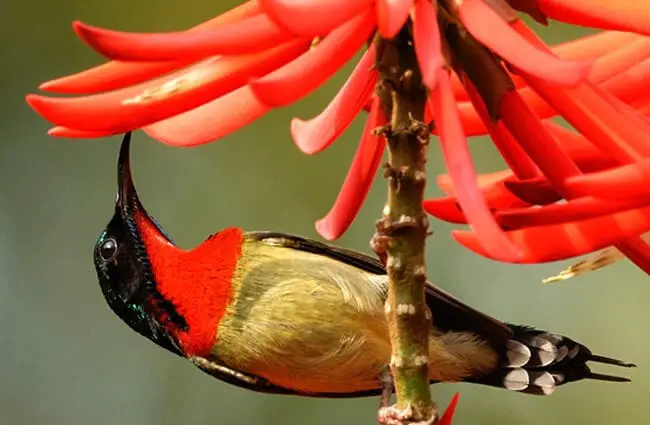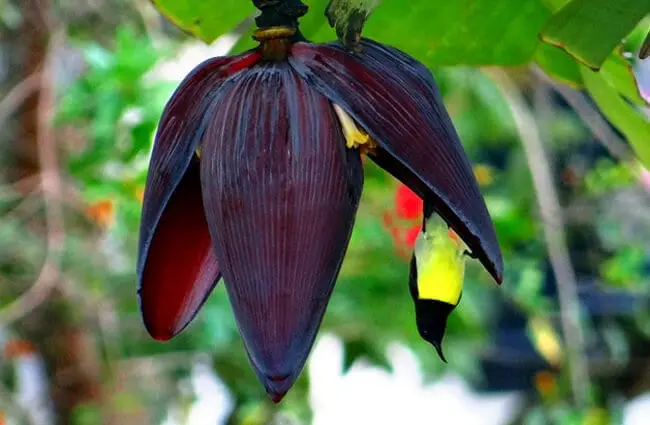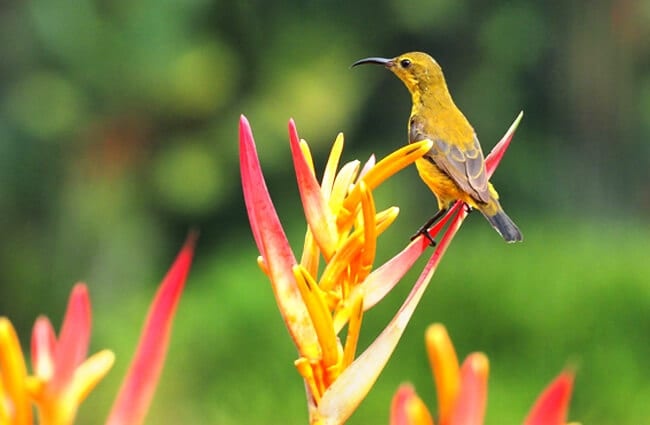Sunbirds, jewels of the avian world, are a captivating group of small, brightly colored birds belonging to the Nectariniidae family. Found across Africa, Asia, and Australia, these energetic creatures play a vital role in pollination and add vibrant color to their habitats. This guide explores the fascinating world of sunbirds, covering their biology, behavior, ecological importance, and interaction with humans.

Understanding Sunbirds
What are Sunbirds?
Sunbirds are small passerine birds, typically measuring between 10 and 20 centimeters in length. They are easily recognized by their long, curved beaks adapted for feeding on nectar, their vibrant plumage, and their often iridescent feathers. Males are usually more brightly colored than females, a characteristic known as sexual dimorphism. The name ‘sunbird’ reflects the shimmering, sun‑like appearance of their feathers as they flit through the light.
Sunbird Habitat and Distribution
Sunbirds occupy a diverse range of habitats, including forests, woodlands, savannas, and gardens. They are particularly common in areas with flowering plants, their primary food source. The majority of sunbird species are found in Africa, especially in sub‑Saharan regions, but several species also inhabit South Asia and parts of Australia. Their distribution is largely determined by the availability of flowering plants and suitable nesting sites.
Sunbird Biology and Behavior
Diet and Feeding Habits
Nectar is the cornerstone of the sunbird diet. Their long, curved beaks and specialized tongues, often fringed or brush‑tipped, are perfectly designed for extracting nectar from flowers. However, sunbirds are not exclusively nectarivores. They supplement their diet with insects, spiders, and other small invertebrates, providing essential proteins and nutrients. They are often seen gleaning insects from foliage or catching them in mid‑air, an opportunistic feeding strategy that also helps control insect populations.

Sunbird Reproduction and Life Cycle
Sunbird breeding seasons vary with species and location, but they generally coincide with the peak flowering season. Males attract females through elaborate courtship displays that involve vocalizations, aerial maneuvers, and the presentation of food. Sunbird nests are intricately woven, pouch‑like structures suspended from branches or twigs. They are often concealed among foliage for protection. The female typically lays one or two eggs, which she incubates for about two weeks. Both parents feed the chicks, which fledge after approximately three weeks. Young sunbirds become independent relatively quickly.
Sunbird Vocalizations and Communication
Sunbirds are vocal birds, using a variety of chirps, trills, and whistles to communicate. These vocalizations serve multiple purposes, including attracting mates, defending territories, and alerting others to danger. Different species have distinct calls, allowing for identification in the field. They also communicate through visual displays, such as wing flicking and body posturing.
Sunbird Ecology and Interactions
Sunbirds as Pollinators
Sunbirds play a crucial role as pollinators in many ecosystems. As they feed on nectar, they inadvertently transfer pollen from flower to flower, facilitating plant reproduction. They are particularly important pollinators for plants with tubular or long‑spurred flowers, which are difficult for other pollinators to access. This pollination service is vital for maintaining plant diversity and ecosystem health.

Sunbirds and Other Animals
Sunbirds interact with a variety of other animals in their environment. They are preyed upon by birds of prey, snakes, and other carnivores. They also compete with other nectarivores, such as honeyeaters and hummingbirds, for food resources. Occasionally, sunbirds visit feeding stations alongside other bird species, creating a vibrant display of avian activity. Some sunbirds exhibit aggressive behavior toward other birds, fiercely defending their feeding territories.
Sunbird Evolutionary History
The evolutionary history of sunbirds is complex and continues to be studied by ornithologists. They are believed to have originated in Africa and subsequently diversified into the numerous species we see today. Genetic studies suggest that sunbirds are closely related to other passerine birds, such as warblers and finches. Their specialized adaptations for nectar feeding likely evolved in response to the availability of flowering plants in their habitats. Fossil evidence of early sunbird ancestors is limited, making it challenging to reconstruct their complete evolutionary lineage.
Sunbirds and Humans
Sunbird in Human Culture
Sunbirds hold cultural significance in many regions where they are found. They are often depicted in art, literature, and folklore, symbolizing beauty, energy, and good fortune. In some cultures, sunbirds are believed to be messengers from the spirit world. Their vibrant colors and cheerful songs make them popular subjects for artists and photographers.

Finding Sunbirds in the Wild
For birdwatchers and nature enthusiasts, observing sunbirds in the wild is a rewarding experience. Look for them in gardens, forests, and woodlands with flowering plants. Listen for their distinctive calls and scan foliage for their small, brightly colored bodies. Bringing binoculars can significantly enhance your viewing experience. Quiet observation and patience are key to spotting these elusive birds.
Caring for Sunbirds in Captivity
Zookeepers and aviculturists caring for sunbirds in captivity must provide a specialized environment that mimics their natural habitat. This includes a spacious aviary with lush vegetation, flowering plants, and a temperature‑controlled climate. Their diet should consist of a sugar‑water solution, supplemented with small insects and fruits. Regular health checks and enrichment activities are essential to ensure their well‑being. It is crucial to provide a clean and hygienic environment to prevent the spread of disease.

What to do if you encounter a Sunbird
If you encounter a sunbird in the wild, observe it from a respectful distance. Avoid making sudden movements or loud noises that could frighten it away. Do not attempt to feed or handle the bird, as this could disrupt its natural behavior. Appreciate its beauty and contribute to its conservation by protecting its habitat and reducing your environmental impact.
Interesting Facts about Sunbirds
- Some sunbird species can hover in mid‑air, similar to hummingbirds.
- Male sunbirds often engage in elaborate courtship displays to attract females.
- Sunbird nests are intricately woven and often camouflaged with lichen and moss.
- Sunbirds play a vital role in pollinating numerous plant species, including many ornamental crops.
- Different sunbird species exhibit varying levels of aggression and territoriality.

Sunbirds are truly remarkable creatures, adding beauty, vitality, and ecological importance to the ecosystems they inhabit. By understanding their biology, behavior, and conservation needs, we can ensure that these jewels of the avian world continue to thrive for generations to come.

![Red Angus Closeup of a beautiful Red Angus cowPhoto by: U.S. Department of Agriculture [pubic domain]https://creativecommons.org/licenses/by/2.0/](https://animals.net/wp-content/uploads/2020/03/Red-Angus-4-238x178.jpg)




![Red Angus Closeup of a beautiful Red Angus cowPhoto by: U.S. Department of Agriculture [pubic domain]https://creativecommons.org/licenses/by/2.0/](https://animals.net/wp-content/uploads/2020/03/Red-Angus-4-100x75.jpg)

